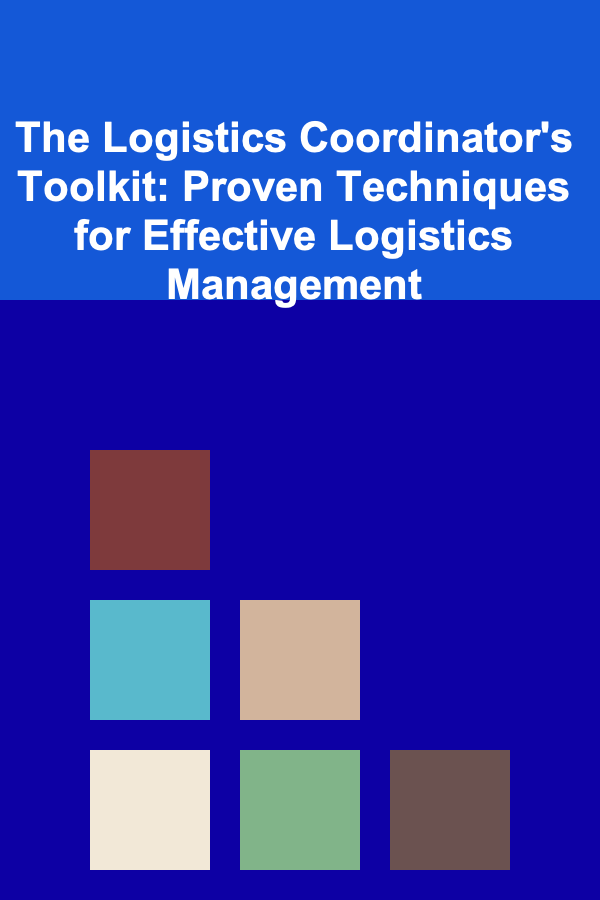
How to Use a Language Learning Checklist to Track Progress
ebook include PDF & Audio bundle (Micro Guide)
$12.99$9.99
Limited Time Offer! Order within the next:
Not available at this time

Language learning can be a challenging yet rewarding journey. Whether you are starting from scratch or looking to improve an existing skill, tracking your progress is essential to staying motivated, identifying areas that need improvement, and ultimately mastering the language. One of the most effective tools for monitoring your learning journey is a language learning checklist.
A language learning checklist is a structured tool that breaks down the learning process into manageable tasks and goals. It serves as a guide, helping learners stay focused, track their progress, and celebrate milestones. In this article, we will explore how to use a language learning checklist to effectively track progress and make the language learning process more organized and rewarding.
Why Use a Language Learning Checklist?
Before diving into how to create and use a language learning checklist, it's important to understand the benefits of this approach. A checklist provides several key advantages:
1. Clarity and Structure
Language learning can be overwhelming, especially when faced with new vocabulary, grammar rules, and cultural nuances. A checklist breaks down the process into smaller, more manageable tasks, making it easier to see exactly what needs to be done next.
2. Motivation and Accountability
By regularly checking off tasks on your list, you can experience a sense of accomplishment and maintain motivation. The physical act of ticking off items provides a visual representation of your progress, which is particularly rewarding when learning a complex subject like a new language.
3. Goal Setting and Focus
Having a checklist helps you set clear, achievable goals. Whether you aim to learn 50 new words in a week or master a specific grammar concept, a checklist allows you to stay focused on your objectives and avoid distractions.
4. Tracking and Measuring Progress
With a checklist, you can easily track your learning milestones. It helps you identify areas where you may be struggling and need additional practice, while also highlighting strengths and areas where you have already achieved success.
5. Personalized Learning Path
Every learner has unique goals and learning styles. A checklist can be tailored to meet your specific needs, whether you're aiming for fluency, conversational ability, or passing a language proficiency test.
Key Components of a Language Learning Checklist
To make the most of a language learning checklist, it is important to include the following key components:
1. Vocabulary
Vocabulary acquisition is fundamental to language learning. A checklist should include specific tasks for learning new words and reviewing previously learned vocabulary. For example, you might include goals such as:
- Learn 10 new words each day.
- Review and reinforce vocabulary from the previous week.
- Use new vocabulary in sentences or conversations.
Tip: It's helpful to categorize vocabulary by themes (e.g., food, travel, emotions) to make learning more organized.
2. Grammar
Grammar is the structure that holds a language together. It's essential to regularly track your progress in mastering grammar rules. Your checklist might include:
- Understand and apply verb conjugations.
- Learn the use of articles, prepositions, and tenses.
- Complete exercises on sentence structure.
Tip: Break down grammar into smaller tasks such as understanding a single tense, practicing sentence construction, or learning specific sentence patterns.
3. Speaking and Pronunciation
Speaking and pronunciation are often the most challenging aspects of language learning, especially if the language has sounds that are unfamiliar. A checklist for speaking might include:
- Practice pronunciation with language apps or by repeating after native speakers.
- Hold conversations with a language partner or tutor.
- Record yourself speaking and listen for areas that need improvement.
Tip: Focus on the areas of speaking that challenge you the most---whether it's tone, accent, or specific sounds.
4. Listening Comprehension
Listening comprehension is crucial to understanding and participating in real conversations. Your checklist could include tasks like:
- Listen to a podcast, news broadcast, or conversation in the target language daily.
- Watch TV shows or movies in the target language without subtitles.
- Practice listening comprehension by answering questions based on audio recordings.
Tip: Start with slower-paced content and gradually increase difficulty as your listening skills improve.
5. Reading and Writing
Reading and writing are key components of mastering a language. A checklist for reading and writing should focus on:
- Reading a certain number of pages or chapters of books, articles, or websites each week.
- Writing journal entries or short essays to practice sentence structure and grammar.
- Reviewing and correcting mistakes in your written work.
Tip: Start with simple texts and gradually work your way up to more complex materials as your skills improve.
6. Cultural Understanding
Learning a language isn't just about vocabulary and grammar; it's also about understanding the culture of the people who speak that language. A checklist might include:
- Learn about cultural practices, holidays, and traditions.
- Study historical events or famous figures in the country where the language is spoken.
- Participate in cultural activities, such as cooking a traditional dish or attending language meetups.
Tip: Deepening your understanding of culture can enhance your language comprehension and make learning more engaging.
7. Practice and Consistency
Language learning requires constant practice. Your checklist should emphasize consistency by setting regular practice goals, such as:
- Practice speaking for 15 minutes every day.
- Listen to a language-learning podcast or watch a short video daily.
- Write a daily summary of your language learning.
Tip: Make language learning a daily habit, even if it's just for a few minutes.
Steps to Create and Use a Language Learning Checklist
Now that we understand the components of a checklist, let's look at how to create and use it effectively.
Step 1: Set Clear Goals
The first step in creating your language learning checklist is to define your goals. Ask yourself:
- Why are you learning this language? (For travel, work, academic purposes, etc.)
- What level of proficiency do you want to achieve? (Conversational fluency, advanced proficiency, etc.)
- What specific areas do you want to focus on first? (Vocabulary, grammar, speaking, etc.)
Your goals will shape the tasks and activities you include in your checklist. Make sure your goals are specific, measurable, achievable, relevant , and time-bound (SMART goals).
Step 2: Break Down Goals into Tasks
Once you've set your goals, break them down into smaller, actionable tasks. For example, if your goal is to learn 100 new words in a month, your checklist might include:
- Week 1: Learn 25 new words.
- Week 2: Learn another 25 words and review the first 25.
- Week 3: Learn 25 more words and review the previous 50.
- Week 4: Learn the final 25 words and complete a final review.
Each task should be specific, realistic, and aligned with your overall goals.
Step 3: Prioritize Tasks
Not all tasks are created equal. Some areas of language learning may be more urgent than others, depending on your learning style and goals. Prioritize tasks based on their importance and your current proficiency level. For example:
- If you're preparing for an exam or speaking engagement, prioritize speaking and listening.
- If you're still in the early stages, focus on vocabulary and grammar.
Step 4: Set Deadlines
Setting deadlines helps keep you on track and ensures that you make consistent progress. For example:
- "By the end of this week, I will have learned 50 new words."
- "By the end of the month, I will have completed the basic grammar module."
Deadlines create a sense of urgency, which can increase your motivation to stay committed.
Step 5: Regularly Update Your Checklist
Language learning is a dynamic process. You might find that some areas need more attention, or that you've mastered a skill faster than anticipated. Make sure to update your checklist regularly based on your progress and challenges.
Step 6: Review Your Progress
At the end of each week or month, take time to review your progress. Celebrate your successes and reflect on areas that need improvement. Adjust your goals and tasks as necessary to continue progressing toward fluency.
Step 7: Stay Flexible
While checklists provide structure, it's also important to stay flexible. Some days you may not have time to complete every task, or you may encounter unexpected challenges. Don't be discouraged---language learning is a journey, not a race. Stay patient with yourself and keep going.
Conclusion
Using a language learning checklist is an effective way to stay organized, motivated, and on track in your pursuit of language proficiency. By breaking down your goals into smaller tasks, setting clear deadlines, and regularly reviewing your progress, you can maximize your learning efficiency and enjoy the process of mastering a new language.
Remember, language learning is not a sprint---it's a marathon. With patience, consistency, and a well-structured checklist, you can achieve your language learning goals and unlock the doors to new cultures, opportunities, and experiences. So, start creating your checklist today, and take the next step toward becoming fluent in your target language!

How to Encourage Community Engagement in Home Safety
Read More
How to Organize Your Recipe Books by Cuisine
Read More
How to Remove Pet Odors from Your Home
Read More
How to Set Up an Online Rental Payment System for Your Tenants
Read More
How to Teach Kids About Money and Finance from a Young Age
Read More
The Logistics Coordinator's Toolkit: Proven Techniques for Effective Logistics Management
Read MoreOther Products

How to Encourage Community Engagement in Home Safety
Read More
How to Organize Your Recipe Books by Cuisine
Read More
How to Remove Pet Odors from Your Home
Read More
How to Set Up an Online Rental Payment System for Your Tenants
Read More
How to Teach Kids About Money and Finance from a Young Age
Read More